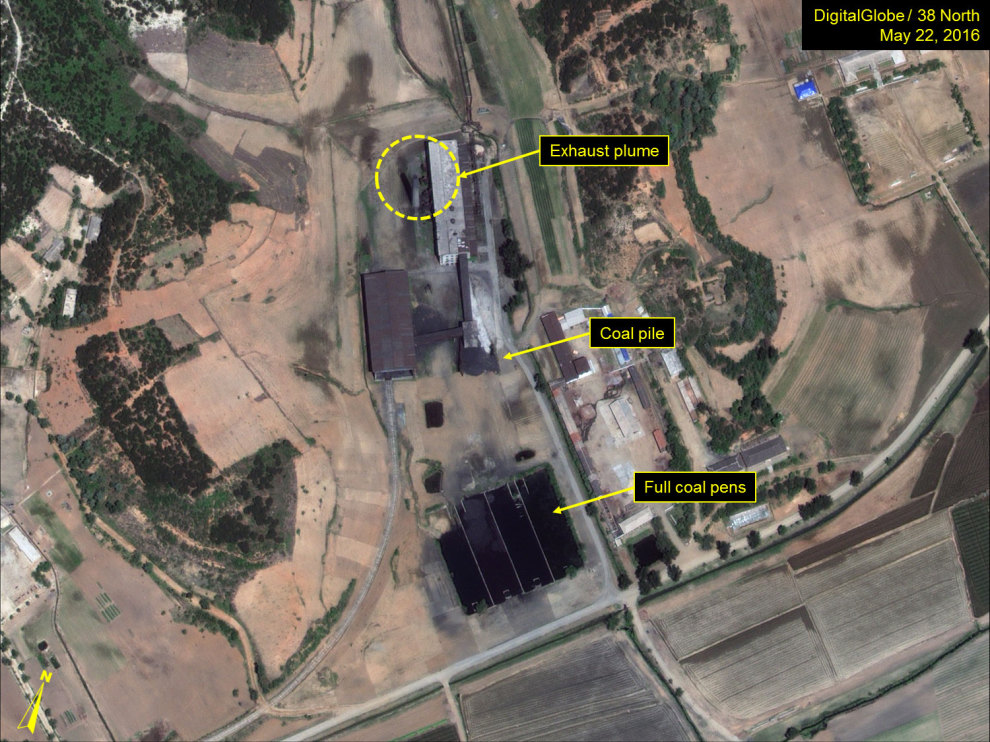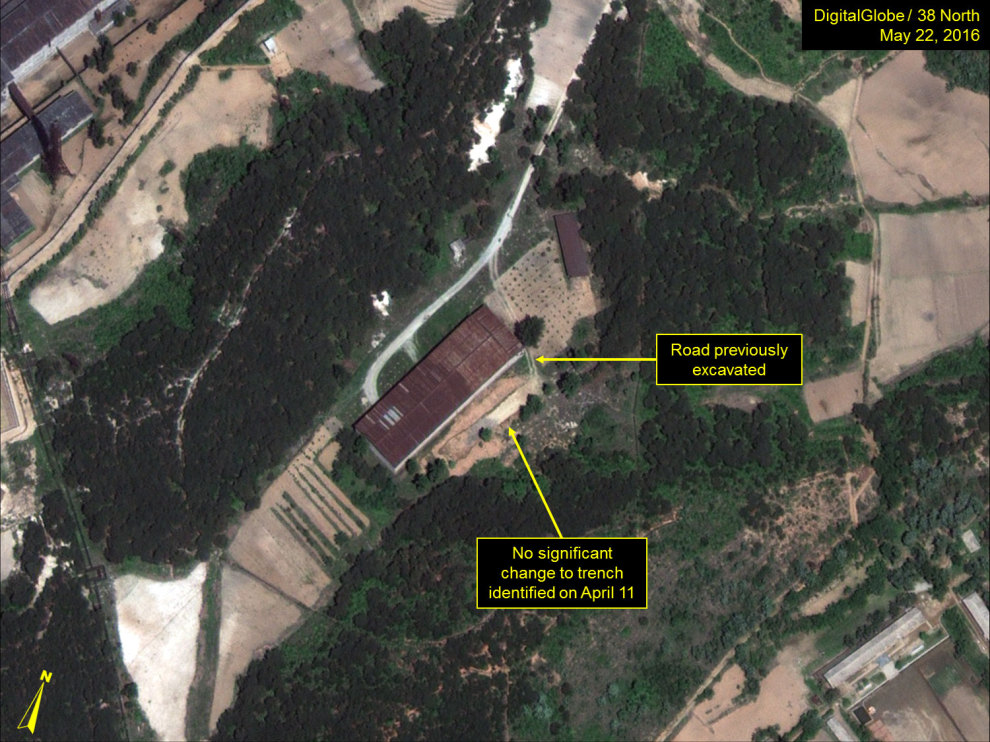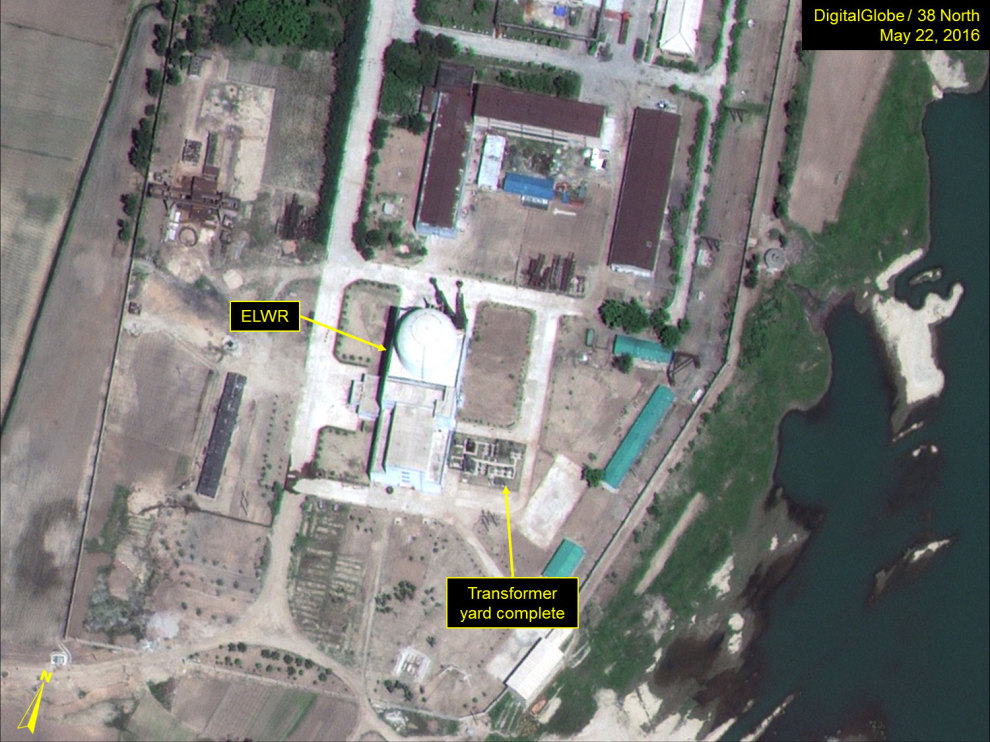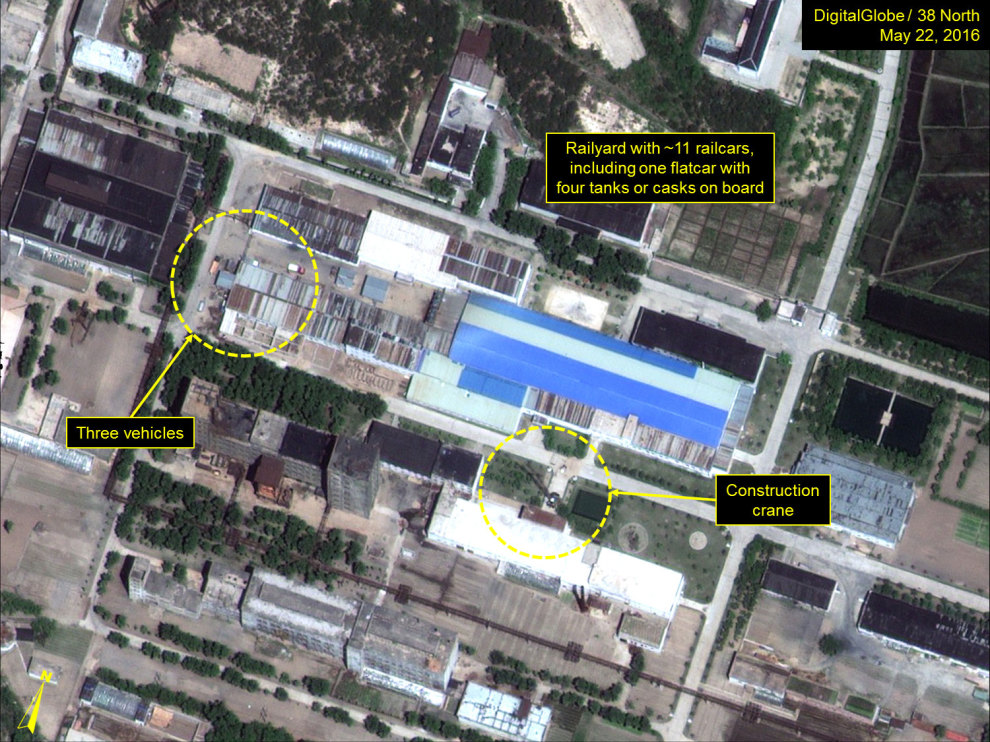New Evidence of Probable Plutonium Production at the Yongbyon Nuclear Facility
Summary
Recent commercial satellite imagery shows new evidence that North Korea is preparing to commence or has already begun conducting a reprocessing campaign to separate more plutonium for nuclear weapons at the Yongbyon Nuclear Scientific Research Center. This activity consists of the presence of two loaded railroad flatcars at the Radiochemical Laboratory loaded with casks or tanks that may be associated with chemicals used in a preprocessing campaign, a small exhaust plume at the facility’s thermal plant, the replenishing of the coal stockpile for that plant and the likelihood that the 5 MWe reactor is operating at a low level of power or not at all. Also, the North appears to have halted work at Building 500, a facility used to store liquid and solid waste in the past from reprocessing campaigns.
Exactly how much new plutonium Pyongyang can produce if such a campaign is underway remains unclear given uncertainties about the level of operations at the 5 MWe reactor which restarted in 2013. At maximum capacity, the reactor could produce approximately 6 kilograms of plutonium per year, probably enough for two nuclear weapons.
New Activity at Radiochemical Laboratory
Recent commercial satellite imagery shows exhaust plumes present at the Radiochemical Laboratory’s Thermal Plant on May 12 and 22 in addition to plumes observed during February and March of this year. Moreover, coal piles at the thermal plant began to be slowly replenished during February and as of May 22, appear to be at capacity.

Figure 1. Exhaust plumes seen at Yongbyon’s Radiochemical Laboratory’s Thermal Plant.
Imagery also shows two railroad flatcars present at the facility’s receiving building from May 13 to May 22. Similar flatcars have previously been associated with reprocessing campaigns in the early 2000s, and seen periodically at the facility since earlier this year, are loaded with what appears to be rectangular tanks or casks that could be used to supply chemicals for a reprocessing campaign, haul out waste products or a number of other related activities.
Figure 2. Railroad flatcars seen at the Radiochemical Laboratory’s receiving building.

Operations at the 5 MWe Reactor
Recent imagery shows two large trucks present on the east side of the 5 Mwe reactor, the exact purpose of which remains unclear. Moreover, there are no indications of steam generation or cooling water exhaust. This activity is similar to that noted in most previous 2015 imagery and, when taken in concert with the activity at the Radiochemical Laboratory, suggests that the reactor is not operating or is doing so at an extremely low level.
Figure 3. Two large trucks seen at the 5 MWe reactor.

Previous Activity at Building 500
As noted in previous analysis, the North built a new dirt access road and excavated a trench on the east side of Building 500 (located approximately 180 meters east of the Radiochemical Laboratory) earlier this year. Historically, Building 500 was used to hold liquid waste from reprocessing in large tanks in its lower level and solid waste on its main level but does not appear to have been used since the early 1990s. This trench measures approximately 7.5 meters by 48 meters (whereas the building itself measures approximately 25 meters by 75 meters). Imagery from May 22 indicates that the trench has not significantly changed since mid-April.
Figure 4. No significant change to recently excavated trench at the Building 500.

Progress at the Experimental Light Water Reactor (ELWR)
Imagery from May indicates that the North has completed work at the ELWR’s transformer yard. The arrangement of power lines suggests that power could be fed both to the east and west. Grading or excavation operations continue around one of the ELWR’s cooling cisterns located approximately 150 meters southwest of the reactor. It is unclear whether this activity is related to the cooling water systems, the extraction of river sand and gravel, or a combination of both. Regardless, this activity strongly suggests that the ELWR is not yet operational.
Figure 5. Work on the ELWR transformer yard seems complete.

Figure 6. Grading or excavation continues around ELWR cooling cisterns.
Continued Activity at the Uranium Enrichment Complex
Imagery from May 22 shows only minor activity at a new facility whose purpose remains unclear in the southeastern corner of the uranium enrichment complex. While the building itself appears externally complete (with the exception of some surrounding roadwork) some foundation-type work has taken place adjacent to the chimney on the east side of the building. Additionally, the heavy construction crane observed in this area in May 11 and May 13 imagery is no longer present. This crane may have been moved to the area immediately south of the Centrifuge Building as a crane of similar size and configuration is present the May 22 image. No clear explanation for the crane’s presence here is apparent, however, it suggests that construction or maintenance work may soon start at the building south of the Centrifuge Building.
The rail yard that serves the Uranium Enrichment Complex remains active with the presence of several rail cars and material on the ground. Significantly, as noted above, is the presence of a flatcar loaded with four rectangular tanks or casks that is identical to one at the Radiochemical Laboratory.
Figure 7. Heavy construction crane seen next to Centrifuge Building, may indicate construction or maintenance work starting soon.

No comments:
Post a Comment